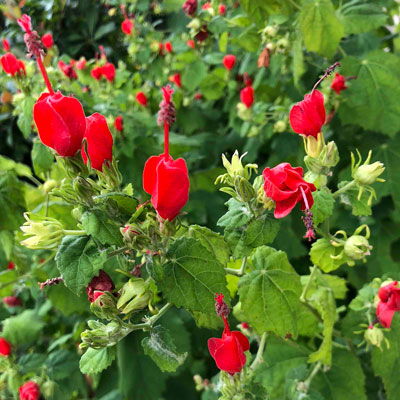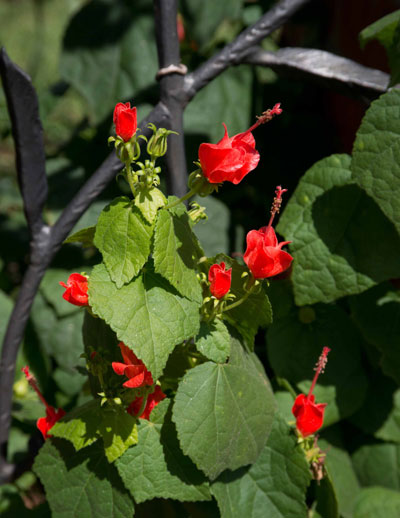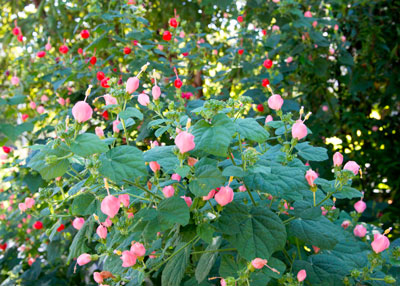Plant of the Week: Turk’s Cap
We don’t have a lot of perennials that bloom from spring through the first frost. Salvia greggii is one that comes to mind, and so is Turk’s cap, Malvaviscus drummondii. Curiously, both are Texas natives.

Turk’s cap provides nice contrasts of color in this landscape setting.
Turk’s cap is a member of the horticulturally rich cotton family that also includes all types of hibiscus and mallows (tropical and hardy), okra and roses-of-Sharon. But this one is different in that its flowers never unfurl. They stay partially rolled, looking somewhat like a Turkish turban.

Turk’s cap’s flower parts are prominently displayed for the benefit of passing butterflies and hummingbirds.
Still, with their petals rolled up, the flowers manage to attract hummingbirds and butterflies all season long. This is truly a flower that just keeps on giving.

There’s something compelling about Turk’s cap with black wrought iron fencing. I can’t explain it. I just like it!
Turk’s cap was selected as a Texas Superstar® plant by Texas A&M in 2011 for its generations of contributions to our state’s landscapes.
Here are the particulars…
• Grows to 4 to 6 ft. tall and 3 to 4 ft. wide.
• Completely winter-hardy in all of Texas.
• Best in morning sun and afternoon shade. Foliage will fade to lighter green if planted in full sun.
• Drought-tolerant, but grows and blooms most successfully when kept moist at all times.
• Flowers spring until frost.

Pink Turk’s cap (variety ‘Pam Puryear’) is a lovely alternative.
• Blooms are most commonly bright red, although pink (including the variety ‘Pam Puryear’) and white forms are sold. ‘Big Mama’ is a Greg Grant hybrid with larger red flowers.
• Plants die to the ground with first hard freeze. Trim all frozen stems back to the ground. New shoots will emerge in the spring. If you are in South Texas and do not experience a killing freeze, trim plants as needed to keep them compact and well managed.
• New plants can be started by division just before new growth begins in the spring or from cuttings during the growing season.
